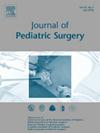The Role of Liquid Biopsy in Neuroblastoma: A Scoping Review.
IF 2.4
2区 医学
Q1 PEDIATRICS
引用次数: 0
Abstract
BACKGROUND Neuroblastoma (NBL), is the most common, non-CNS solid tumor of childhood. This disease presents with unique biological and clinical challenges necessitating accurate diagnosis, prognosis assessment, treatment, and vigilant monitoring. Liquid biopsy is an upcoming, innovative, and non-invasive diagnostic modality. It has the potential to detect tumors and perform therapeutic monitoring through the analysis of circulating biomarkers in blood, urine, saliva, and other bodily fluids. METHODOLOGY This scoping review offers an in-depth exploration, of the current landscape of liquid biopsy-based biomarkers in NBL. The review looks at the clinical implications, prevalent challenges, and future outlook of their clinical applications in NBL. The scoping review adhered to the guidelines of the PRISMA extension for scoping reviews, known as PRISMA-ScR, as the skeletal framework. The review involved comprehensive searches for liquid biopsy-based biomarkers in NBL across multiple databases, including PUBMED, EMBASE, SCOPUS, and WEB of Science, without restrictions. RESULTS The scoping review process uncovered a significant body of literature (n = 201) that underwent meticulous scrutiny, ultimately leading to the final selection of studies (n = 15). The liquid biopsy biomarkers included circulating tumor cells (CTCs), circulating tumor DNA (ctDNA), exosomes, and other entities in bodily fluids. Their evaluation focused on associations with clinical outcomes such as overall survival, event-free survival, and risk stratification in NBL. CONCLUSION Our findings highlight the potential of liquid biopsy biomarkers to revolutionize NBL diagnosis and therapeutic monitoring. This rapidly evolving frontier in pediatric oncology suggests significant advancements in precision medicine for the management of NBL.液体活检在神经母细胞瘤中的作用:范围综述》(The Role of Liquid Biopsy in Neuroblastoma: A Scoping Review)。
背景神经母细胞瘤(NBL)是儿童时期最常见的非中枢神经系统实体瘤。这种疾病具有独特的生物学和临床挑战,需要准确的诊断、预后评估、治疗和警惕性监测。液体活检是一种即将出现的创新性无创诊断方式。通过分析血液、尿液、唾液和其他体液中的循环生物标记物,它具有检测肿瘤和进行治疗监测的潜力。综述探讨了其在 NBL 临床应用中的临床意义、普遍挑战和未来展望。该范围界定综述以范围界定综述的 PRISMA 扩展指南(即 PRISMA-ScR)为骨架框架。综述涉及在多个数据库(包括 PUBMED、EMBASE、SCOPUS 和 WEB of Science)中全面检索 NBL 中基于液体活检的生物标记物,且不受限制。结果范围界定综述过程中发现了大量文献(n = 201),并对其进行了细致的审查,最终选定了研究(n = 15)。液体生物标志物包括体液中的循环肿瘤细胞(CTCs)、循环肿瘤DNA(ctDNA)、外泌体和其他实体。我们的研究结果凸显了液体生物标记物在革新 NBL 诊断和治疗监测方面的潜力。儿科肿瘤学这一快速发展的前沿领域表明,精准医疗在NBL的管理方面取得了重大进展。
本文章由计算机程序翻译,如有差异,请以英文原文为准。
求助全文
约1分钟内获得全文
求助全文
来源期刊
CiteScore
1.10
自引率
12.50%
发文量
569
审稿时长
38 days
期刊介绍:
The journal presents original contributions as well as a complete international abstracts section and other special departments to provide the most current source of information and references in pediatric surgery. The journal is based on the need to improve the surgical care of infants and children, not only through advances in physiology, pathology and surgical techniques, but also by attention to the unique emotional and physical needs of the young patient.

 求助内容:
求助内容: 应助结果提醒方式:
应助结果提醒方式:


